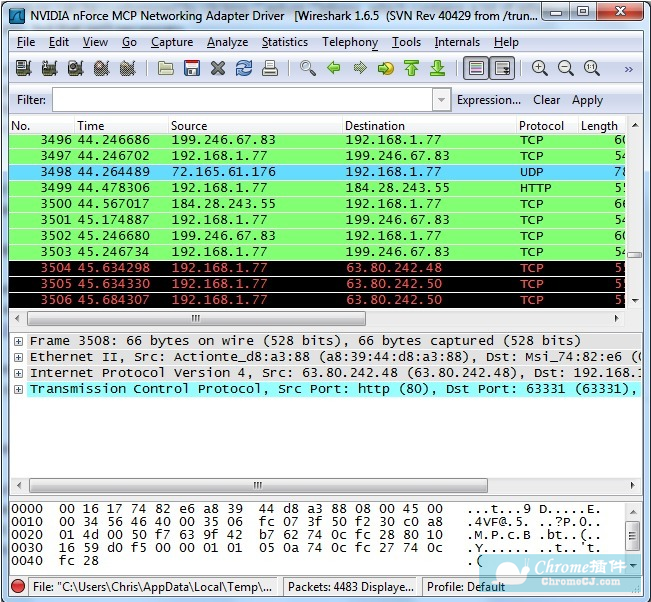

Unfortunately, we don’t know other details like the actual URL or data returned from the server. For example, when viewing in a web browser, a pcap would show as the server name for this traffic when viewed in a customized Wireshark column display. HTTPS traffic often reveals a domain name. Today most HTTPS traffic uses Transport Layer Security (TLS).

These tunnels first used Secure Sockets Layer (SSL) as an encryption protocol. HTTPS is essentially an encrypted communications tunnel containing HTTP traffic. However, as security became an increasing concern, websites started switching to HTTPS, and now we rarely see HTTP traffic from web browsing. In the mid- to late-1990s, the most common protocol used by websites was Hypertext Transfer Protocol (HTTP), which generated unencrypted web traffic.

We recommend you review this pcap in a non-Windows environment like BSD, Linux or macOS if at all possible. There is a risk of infection if using a Windows computer.

Warning: The pcap used for this tutorial contains Windows-based malware. Here is a Github repository with a ZIP archive containing the pcap and a key log file used for this tutorial. Note: Our instructions assume you have customized your Wireshark column display as previously described in “ Customizing Wireshark – Changing Your Column Display.”. Today, we will examine HTTPS activity from a Dridex malware infection. With this key log file, we can decrypt HTTPS activity in a pcap and review its contents. Decryption is possible with a text-based log containing encryption key data captured when the pcap was originally recorded. This Wireshark tutorial describes how to decrypt HTTPS traffic from a pcap in Wireshark. When reviewing pcaps from malware activity, it’s very helpful to know what’s contained within post-infection traffic. But like most websites, various types of malware also use HTTPS. Why? Because most websites use the Hypertext Transfer Protocol Secure (HTTPS) protocol. When reviewing suspicious network activity, we often run across encrypted traffic. The instructions assume you are familiar with Wireshark, and it focuses on Wireshark version 3.x. This tutorial is designed for security professionals who investigate suspicious network activity and review packet captures (pcaps) of the traffic.


 0 kommentar(er)
0 kommentar(er)
